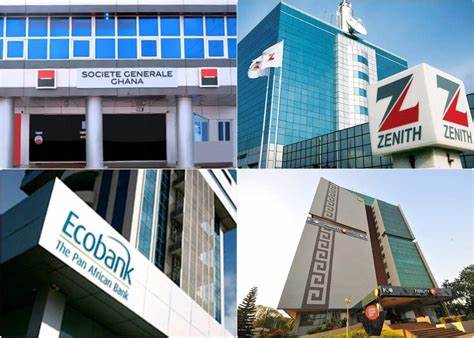Banks in Ghana wrote off a little above ¢768.29 million as bad debt in the first four months of 2022, about 5.5% increase over the same period last year.
According to the latest Monetary Policy report by the Bank of Ghana, the bad debt is made up of loan losses, depreciation, among others.
Despite the increase in the provision of the bad debt, the banking industry’s asset quality improved year-on-year, evidenced by the decline in the Non-Performing Loans (NPLs) ratio from 15.5% in April 2021 to 14.3% in April 2022.
The decline in the NPLs ratio was on the back of a higher growth in the stock of loans, from 7.0% to 25.8% during the review period.
When adjusted for the fully provisioned loan loss category, the industry’s adjusted NPL ratio also declined sharply from 6.5% to 4.2%.
On the other hand, the stock of NPLs, increased to ¢8.6 billion in April 2022, from ¢7.4 billion in April 2021, representing a growth of 15.8%.
The increase in the NPL stock indicates that some asset quality risks still remain within the banking sector.
Meanwhile, the extension of the loan repayment moratoria deadline by the Bank of Ghana to December 31st, 2022 is expected to provide relief to customers adversely impacted by the pandemic and help moderate the growth in non-performing loans within the banking sector.
All 3 sectors record improvements in NPL
In terms of sectorial performance, all but three sectors recorded improvements in their NPL ratios during the period under review.
These are electricity, water and gas (from 22.6% to 12.2%); manufacturing (from 18.3% to 10.9%); mining and quarrying (from 10.7 % to 6.5%); commerce and finance (from 21.9% to 18.9%) and the services sectors (from 9.1% to 8.7%).
On the other hand, the sectors that recorded increases in their NPL ratio were construction (from 24.0% to 32.1%); transportation, storage and communication (from 10.4% to 12.4%) and the agriculture, forestry and fishing sectors (from 23.7% to 25.0%).
The sector with the lowest NPL ratio was the mining and quarrying sector while the construction sector had the largest proportion of its loans impaired.
Latest Stories
-
Audit Service fires back at UTAG-UG over smear campaign claims
46 minutes -
Opoku Agyemang’s private jet use: Be a man of principle and resign – Ntim Fordjour to Ablakwa
4 hours -
Cameron Duodu at 88: A life penned with purpose
5 hours -
NPP’s Adenta Kumi released from NIB custody
6 hours -
Surviving and Growing in Turbulent Times: The Strategic Role of Marketing
7 hours -
McTominay stunner helps Napoli win Serie A title
7 hours -
360 Africa and Ebenezer SHS unite in Dansoman to promote ‘Renewable Energy for All’
7 hours -
Old age inspired me to establish a hotel – KSM
7 hours -
Newsfile to discuss suspended CJ’s legal battle and Accra flood crisis this Saturday
8 hours -
Gifty Anti inspires young women to rise above challenges at TAF College’s 2025 Freelancers launch
8 hours -
Police restore calm in Adoagyiri after violent clashes between youth groups
8 hours -
Obstructionist behaviour must not be tolerated – Prof Kwesi Aning warns
8 hours -
Wontumi alleges intimidation and threats amid raid at his residence
8 hours -
GREDA urges pricing discipline as cedi strengthens against dollar
8 hours -
Ghana scales up fight against obstetric fistula with free surgeries in five hospitals
9 hours

